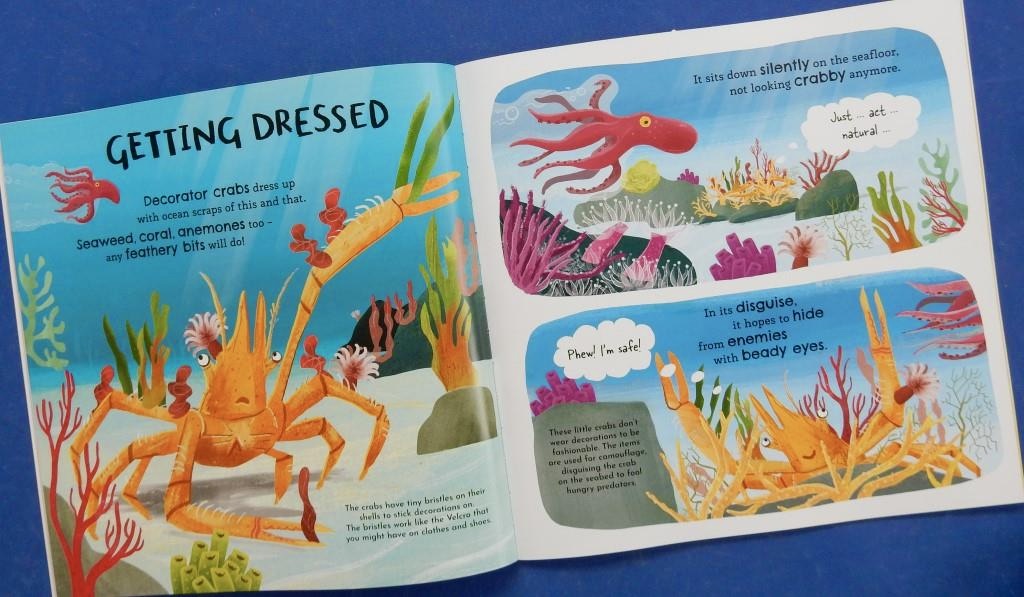
Does A Bear Wash Its Hair?
Moira Butterfield and Adam Ming
Bloomsbury Children’s Books
In this sequel to Does a Monkey get Grumpy? author Moira Butterfield turns her attention to animals’ daily routines. You may well be surprised to read that many animals – certainly the fifteen featured in this book – devote a considerable amount of their time doing the same things we humans do, although they don’t go about them in the same way. They are nonetheless, creatures of habit.
Whereas we humans normally use soap and water to keep ourselves clean, brown bears lick their fur, slurping up whatever is attached to it, sometimes tasty bugs, so they get a reward as well as a wash. Certain fish including green moray eels visit coral reef cleaning stations where cleaner wrasse nibble off unwanted bugs and flaking scales: a win/win process.
Did you know that decorator crabs dress themselves up with bits and pieces from the ocean, these they stick onto tiny bristles on their shells, the intention being that so disguised they won’t be easily preyed upon by hungry enemies.

Young readers will be amused to discover that young meerkats have lessons – hunting lessons where they learn how to bite off a scorpion’s sting. Before swallowing a scorpion though, they roll it in the sand to rub off any poison.
Poo is a topic that seems to fascinate most young children and I suspect they will laugh at the thought of a sloth descending from its tree once a week to take a ‘big poo’ excreting a third of its body weight. Having made a poo pile, sloths then need to bury it to prevent enemies discovering where they live.
Tidying,

co-operating, making friends, teeth cleaning, eating meals and sleeping are habitually done by animals of various kinds.
All these are described in Moira’s bouncy rhythmic text (with additional factual snippets) and illustrated in Adam Ming’s amusing scenes making this a really fun way of teaching children the many similarities between humans and other animals..